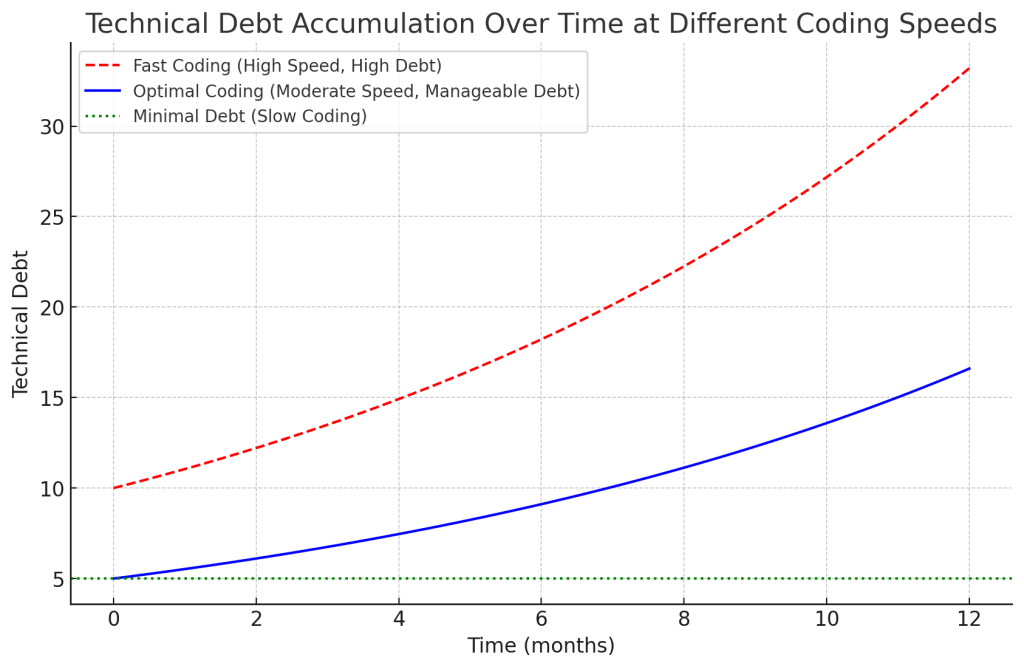In the world of software development, moving at lightning speed is tempting. With deadlines, the urge to impress, and a lot of caffeine, it can feel like the faster you code, the sooner you’ll be celebrating that big release. But here’s the twist—going fast is like signing up for a race with a twisty obstacle course called technical debt. Code too quickly, and you may find yourself tangled in bugs, shortcuts, and mysterious functions you can barely recognize later.
Meet Technical Debt: Your Code’s Future Therapist Bill
Technical debt is a metaphor (we hope) representing the “pay later” cost of quick coding. While moving fast feels great initially, shortcuts can lead to “debt” that demands payment sooner or later. And just like with any good story, the faster you go, the more debt you’ll accumulate. Think of it as your code’s version of skipping sleep—sooner or later, you’re going to pay.
A Mathematical Model of Technical Debt
To keep things interesting, let’s add a little math. We can represent technical debt with this simple function:
where:
is time (in weeks or months, or “whatever it takes”),
is the speed of coding (aka, “how fast can we do this?”),
is a constant showing just how quickly debt will come back to haunt you.
In this model, technical debt grows exponentially, especially if we “forget” about it in the name of speed. Spoiler alert: it will come back, like a plot twist you definitely saw coming.
Visualizing the Trade-off: Fast Coding vs. a Little Patience
Below is a graph showing the accumulation of technical debt over time with two different strategies:

- Fast Coding (Red Line): Sure, you’ll get things done fast, but with an ever-growing mountain of debt that’ll make you want to cry.
- Optimal Coding (Blue Line): A moderate speed keeps debt in check while avoiding some of those “What was I thinking?” moments.
- Minimal Debt (Green Line): Coding slowly has minimal debt, but it’s about as fun as watching grass grow. Practical? Not always.
Key Takeaways (and a Smidge of Advice)
- Fast Coding Is Like Fast Food: Tastes great now, but you might regret it later.
- Optimal Speed = Happy Medium: Coding at a steady pace minimizes debt without sacrificing all of your nights and weekends.
- Minimal Debt Isn’t Always Possible: Sometimes you have to get things done, even if that means incurring a little debt. Just don’t let it snowball.
Finding Your Optimal Pace
Every developer has an ideal pace (right between “I can do this” and “Is this code even mine?”). Balancing speed and technical debt is essential for long-term success, even if that means slowing down just a bit. And remember, sometimes it’s worth it to give future-you a break—think of it as a present you’ll appreciate later.